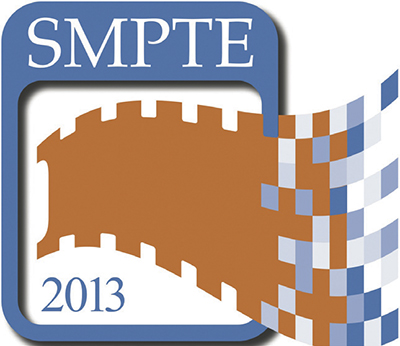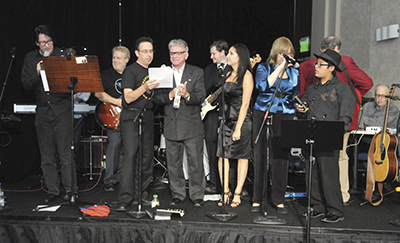4K/UHD to Headline SMPTE 2013

HOLLYWOOD, CALIF.—4K/Ultra High Definition TV will be front and center at the SMPTE 2013 Annual Technical Conference & Exhibition, Oct. 22– 24 at the Loews Hollywood Hotel in Hollywood, Calif.
“4K/UHD is the SMPTE Symposium topic, so it is an area of high focus in the industry today,” said SMPTE executive director Barbara Lange. “In the technical conference program, the ‘More, Better, Faster Pixels’ track will tackle multiple UHD-related topics as well.”
New this year at SMPTE is a Business Track produced by SMPTE in collaboration with Insight Media, a New Yorkbased display-oriented market research and publishing company. “This is designed to appeal to professionals that are more focused on investment, return on investment, and general business issues associated with the broader adoption of 4K/UHD electronics and content in professional as well as consumer markets,” Lange said.
The SMPTE Symposium will also feature a 4K/UHD demo room, serving the same function of HDTV demo rooms over a decade ago. In this instance, the SMPTE 4K/UHD demo room will let visitors take a firsthand look at upconverted imaging and HEVC compression techniques.
SERIOUS ABOUT 4K
This year’s SMPTE focus on 4K/UHD is an engineering response to the buzz that the technology has been generating among consumers, broadcasters and equipment manufacturers. “If you attended the recent IBC expo, you will have seen UHD everywhere,” said Lange. “As the consumer electronics industry is pushing new UHD television units to consumers, the broadcast industry is looking at ways to create and then monetize content. So I think the industry is serious about it, though a lot of work still needs to take place before UHD becomes routine in every broadcasters’ plant.”

The “SMPTE Jam,” highlighting the musical talents of SMPTE members, will return again this year.
That said, SMPTE 2013 will touch upon a wide range of other relevant broadcast engineering topics, including the impact of other significant image enhancements such as high frame rate, bit-depth, expanded color gamut, and high dynamic range.
Get the TV Tech Newsletter
The professional video industry's #1 source for news, trends and product and tech information. Sign up below.
Even 3DTV will be on the agenda, despite the failure of this technological advance to gain traction among television viewers in general. In the session “Stereoscopic 3D Imaging, Processing, Distribution and Display,” “speakers will explore topics such as issues impacting perceived brightness, how well has high frame rate 3D been accepted and, in what promises to be a very interesting talk, we will look at how some things may appear larger than in real life when shown in stereoscopic 3D,” Lange said.
In the session “Faxes, Emails, Pagers, and The Macarena – Adios to Relics of the ’90s,” Chris Lennon, SMPTE standards director and president and CEO of the recently launched consulting firm MediAnswers, will look at the behind-the-times state of broadcast traffic instructions.
“These are the instructions that come from agencies to broadcasters, telling them when and where to air their commercial spots,” explained Lennon. “Believe it or not, this communication is still conducted largely by fax and email attachments, with manual re-entry of all of the information into broadcast traffic systems.” Lennon, formerly of Harris and known as “father of the Broadcast eXchange Format standard” will outline how the new BXF 3.0 will bring traffic into the 21st century.
NETWORK GENLOCK
In “The Evolution to Network-Distributed Genlock, ” Paul Briscoe, manager of strategic engineering at the Harris Broadcast Communications Division, will discuss the state of current system synchronization, and introduce the new SMPTE network-based “Genlock” concept.
Despite the fact that broadcasters are adopting IP networks for live media production and transportation, “synchronization systems of today are based on decades-old technology and require dedicated distribution infrastructures,” said Briscoe. “Capitalizing on the profusion of IP in this domain, the Network Genlock standard will enable future-looking systems to be built with a mix of legacy and future—Network Genlock only—equipment without the need for yesterday’s reference distribution infrastructure.”
In “A Study on Laser Illuminated Digital Cinema Projector Safety,” SMPTE Past President Pete Ludé will examine the new generation of cinema-type video projectors, which use semiconductor lasers as light sources. Currently, these laser-illuminated projectors are regulated like conventional laser devices, whose uses are restricted due to the dangers bare laser beams pose to the human eye.
Based on recent field tests, “laser illuminated projectors are just as safe to viewers as well-established xenon lamp projectors,” said Ludé. “Outdated regulations need to be updated to reflect this.”
Additional SMPTE highlights will include an industry luncheon keynote from David Gibbons of Ustream and an opening keynote from Tom Gewecki of Warner Brothers, who will speak on the future of digital content in an increasingly Internet-based world. Also returning this year, the “SMPTE Jam,” where SMPTE members get to showcase their “musical” talents.
To learn more about SMPTE 2013, go to www.smpte.org.
James Careless is an award-winning journalist who has written for TV Technology since the 1990s. He has covered HDTV from the days of the six competing HDTV formats that led to the 1993 Grand Alliance, and onwards through ATSC 3.0 and OTT. He also writes for Radio World, along with other publications in aerospace, defense, public safety, streaming media, plus the amusement park industry for something different.

